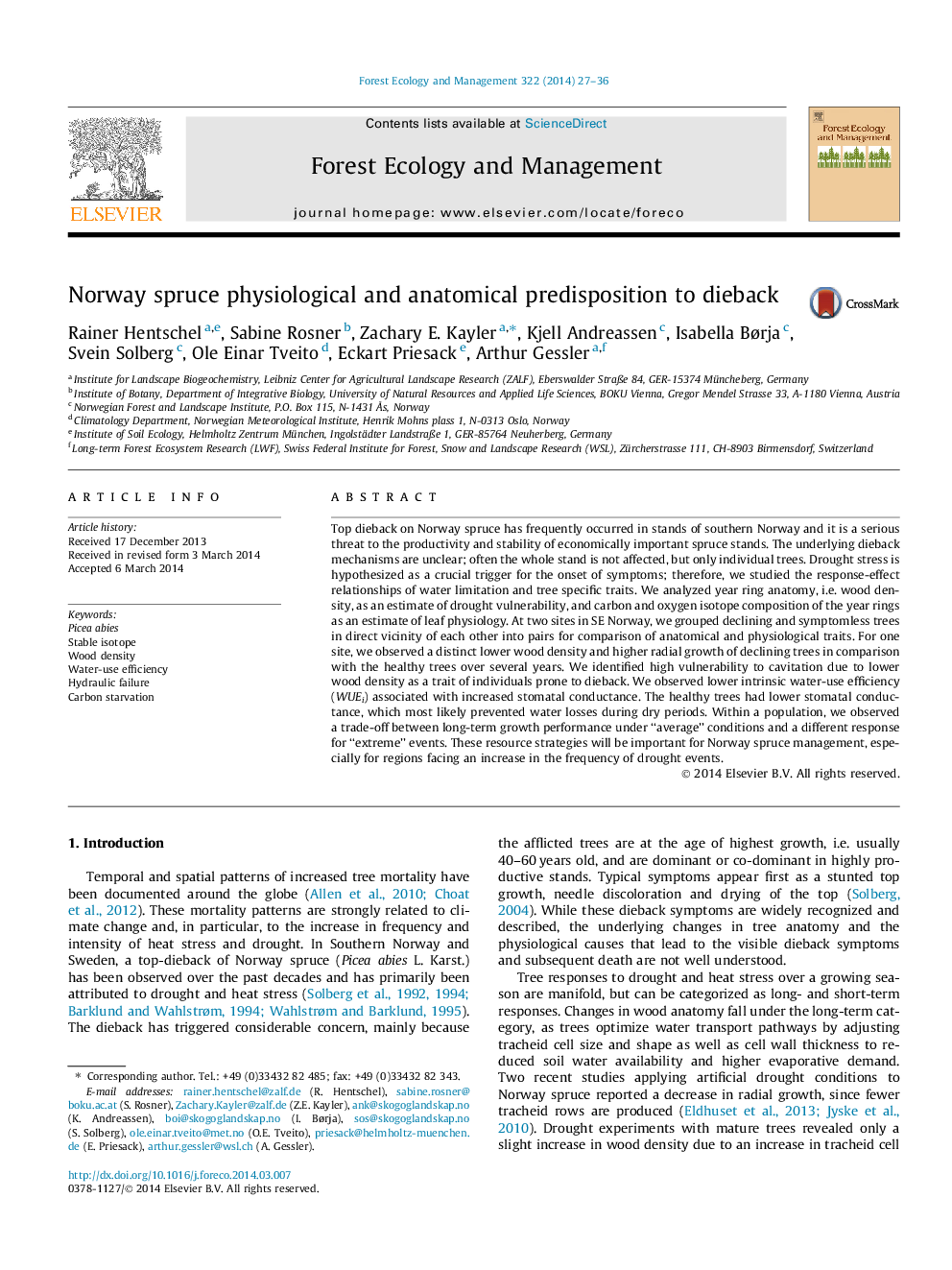| کد مقاله | کد نشریه | سال انتشار | مقاله انگلیسی | نسخه تمام متن |
|---|---|---|---|---|
| 86755 | 159210 | 2014 | 10 صفحه PDF | دانلود رایگان |
• Two water use strategies exist for Norway spruce: provident and prodigal trees.
• Prodigal trees exert less stomatal control contributing to top-dieback risk.
• Wood anatomy of declining trees shows higher hydraulic-based drought risk.
• Trees suffered from hydraulic failure rather than reduced carbon uptake.
Top dieback on Norway spruce has frequently occurred in stands of southern Norway and it is a serious threat to the productivity and stability of economically important spruce stands. The underlying dieback mechanisms are unclear; often the whole stand is not affected, but only individual trees. Drought stress is hypothesized as a crucial trigger for the onset of symptoms; therefore, we studied the response-effect relationships of water limitation and tree specific traits. We analyzed year ring anatomy, i.e. wood density, as an estimate of drought vulnerability, and carbon and oxygen isotope composition of the year rings as an estimate of leaf physiology. At two sites in SE Norway, we grouped declining and symptomless trees in direct vicinity of each other into pairs for comparison of anatomical and physiological traits. For one site, we observed a distinct lower wood density and higher radial growth of declining trees in comparison with the healthy trees over several years. We identified high vulnerability to cavitation due to lower wood density as a trait of individuals prone to dieback. We observed lower intrinsic water-use efficiency (WUEi) associated with increased stomatal conductance. The healthy trees had lower stomatal conductance, which most likely prevented water losses during dry periods. Within a population, we observed a trade-off between long-term growth performance under “average” conditions and a different response for “extreme” events. These resource strategies will be important for Norway spruce management, especially for regions facing an increase in the frequency of drought events.
Journal: Forest Ecology and Management - Volume 322, 15 June 2014, Pages 27–36
